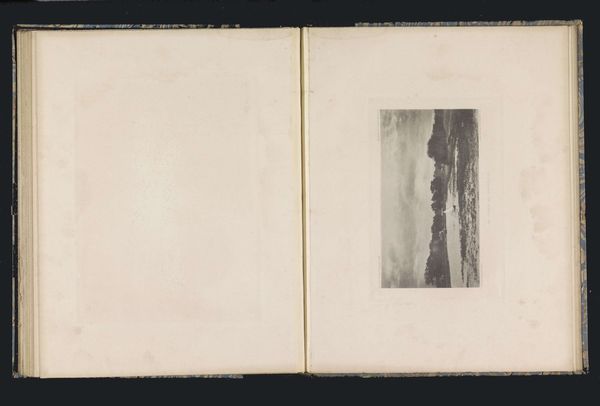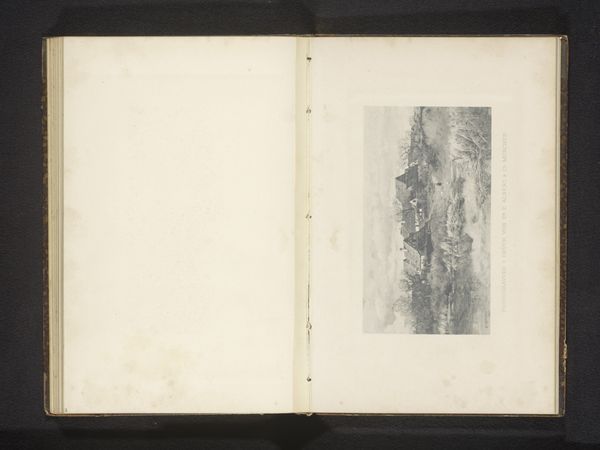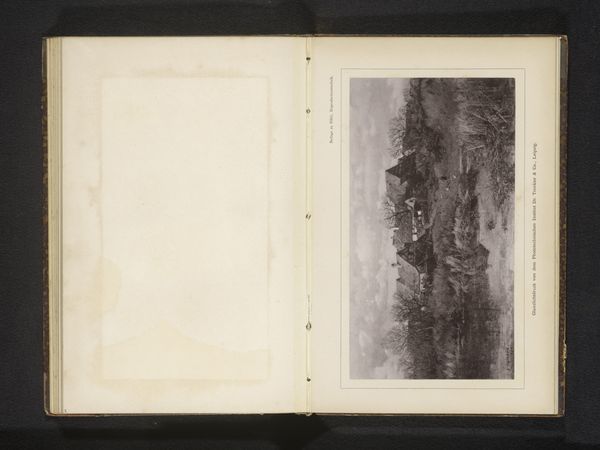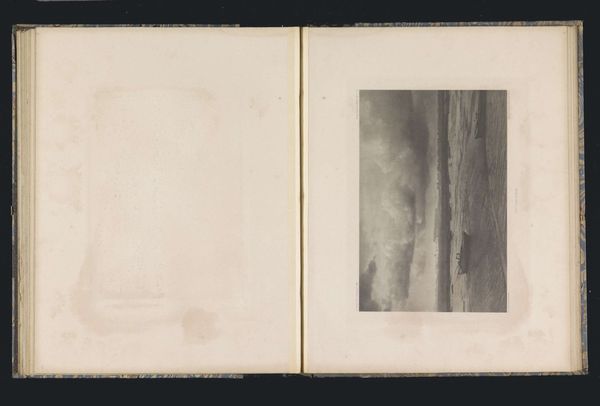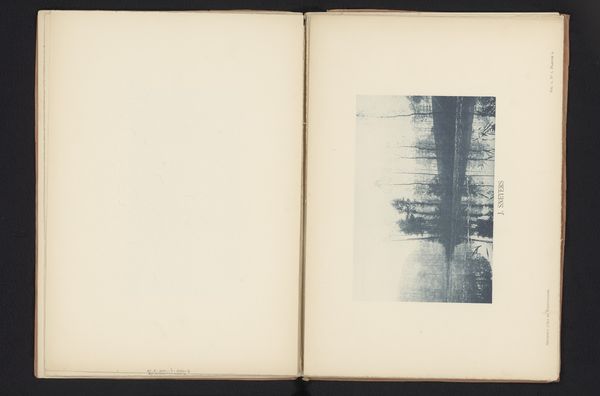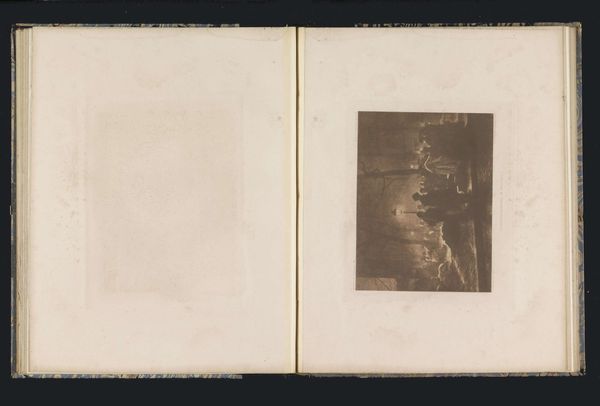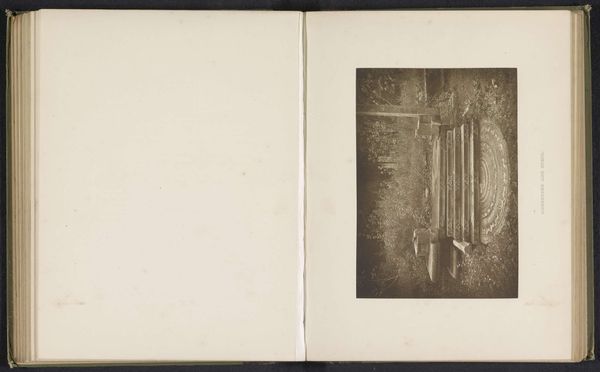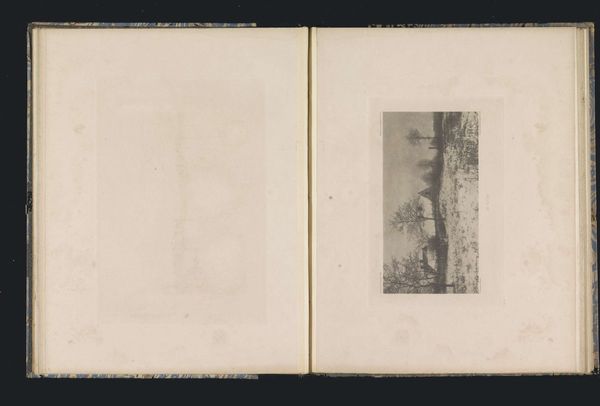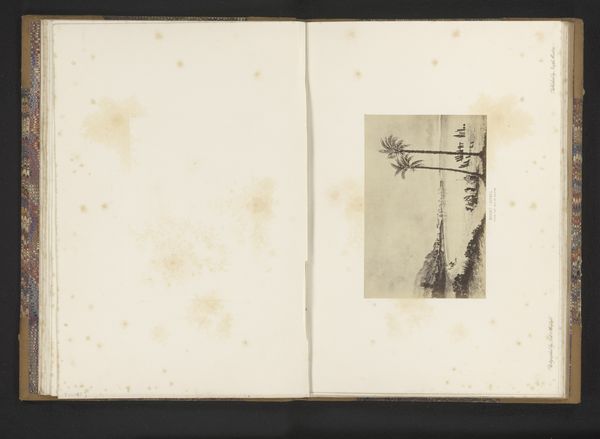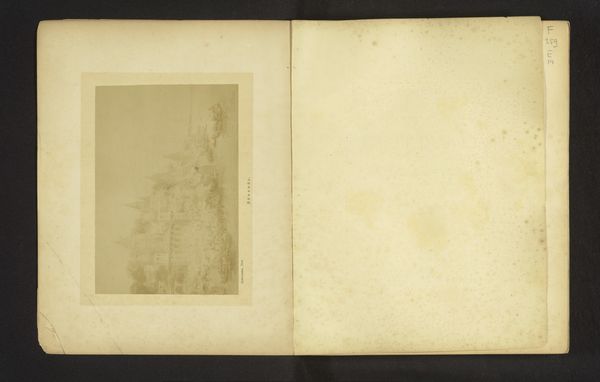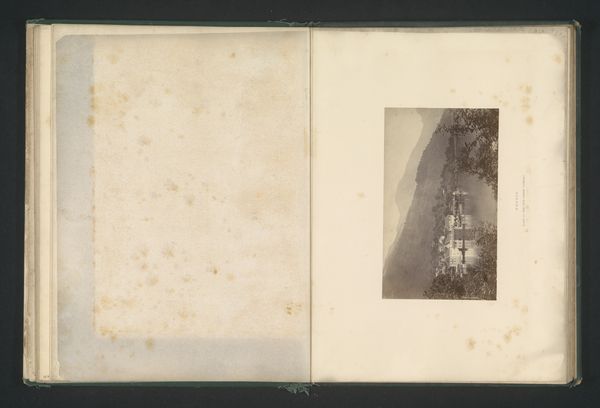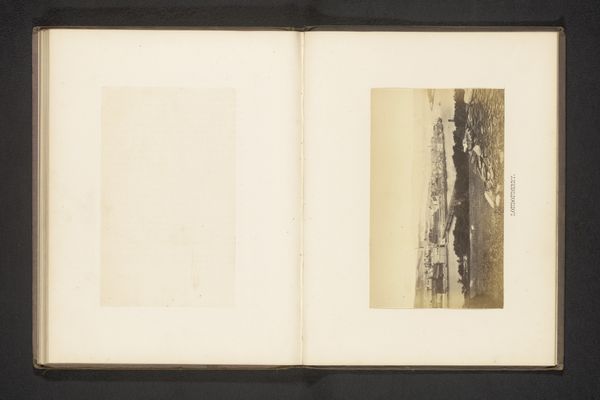
print, photography
# print
#
landscape
#
photography
#
realism
Dimensions: height 105 mm, width 227 mm
Copyright: Rijks Museum: Open Domain
Curator: Ernst Schatz created this intriguing landscape, "Landschap na een overstroming," sometime before 1899, using photography or printmaking techniques to realize it. Editor: My immediate reaction is one of melancholic beauty. The tall vertical composition almost feels like a visual sigh. The monochrome adds to that sense of stillness, doesn’t it? Curator: Absolutely. It is quite potent, isn't it? Think of the potential devastation of floods—historically, marginalized communities often suffer the most from natural disasters. This image makes me wonder about those experiences. Editor: Yes, that is visible, but look at how Schatz has framed the receding floodwaters, creating a long tonal progression from near dark to nearly white on the horizon. The repetition of upright linear objects piercing the horizon echoes nature—such balance, don’t you agree? Curator: Balance, yes, but also stark vulnerability! This image might speak volumes about resilience and environmental justice; and if you look carefully you may notice that the only sign of life present is only due to human interaction with this now damaged environment. Editor: It cannot be denied! But this very fine observation aside, this artwork makes us think about what it is. Curator: Precisely, that is why it prompts me to delve into societal contexts. What was the socio-economic backdrop during Schatz's time? How did class structures impact responses to environmental crises like floods? Editor: While your questions have merit, let's consider it more aesthetically. I would even argue it is the composition’s tonal contrast that draws our attention to your subject and context rather than to our world of today. Curator: I find it valuable, because in examining past societal power structures as visualized through such technique, the artist and art might give the stage for future environmental activism. Editor: To conclude, what captivates me is this harmony and balance— it presents a fascinating lesson in visual economy, so minimal, yet powerfully evocative. Curator: Yes, it reveals an environmental crisis but the image reminds us of how those events impact the powerless of yesterday, of today, and maybe of the future!
Comments
No comments
Be the first to comment and join the conversation on the ultimate creative platform.
